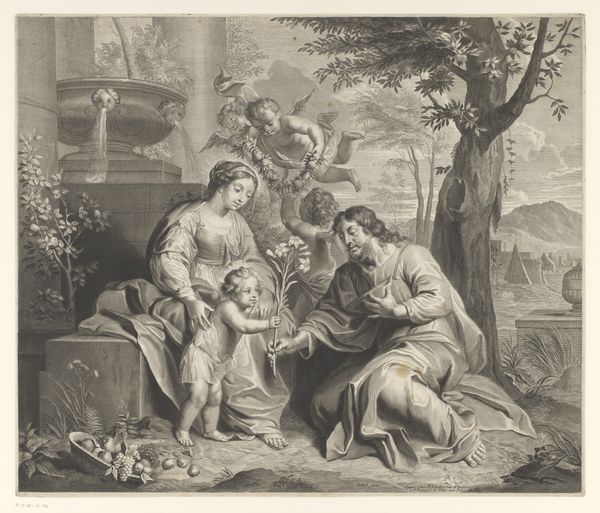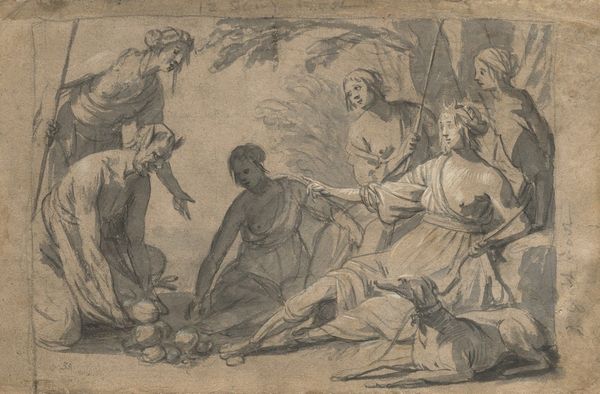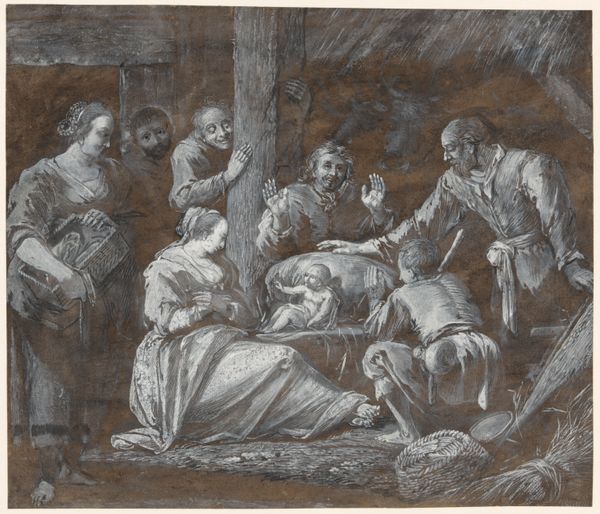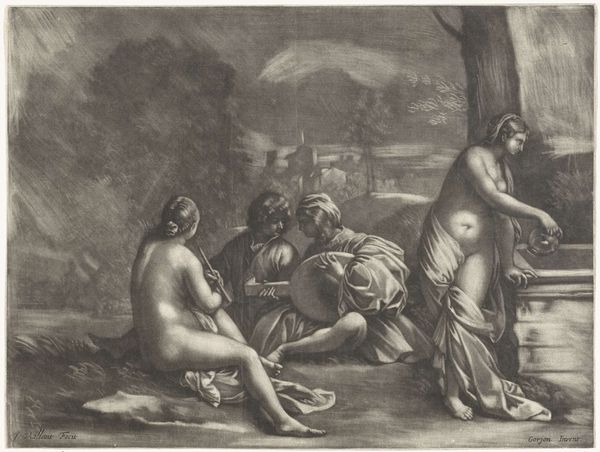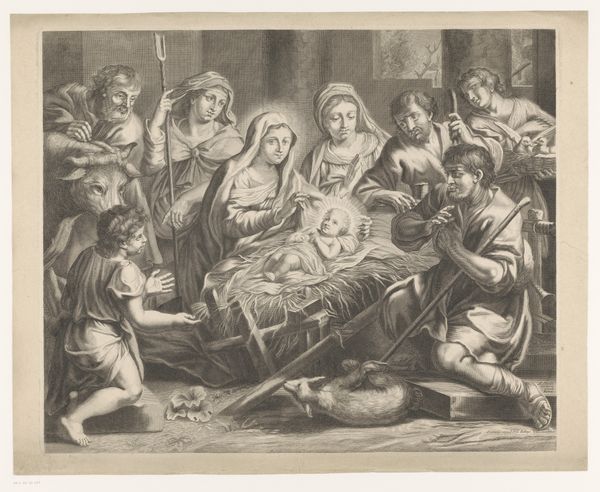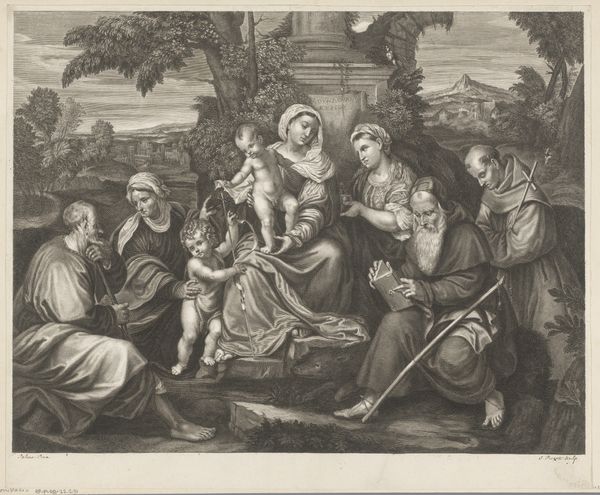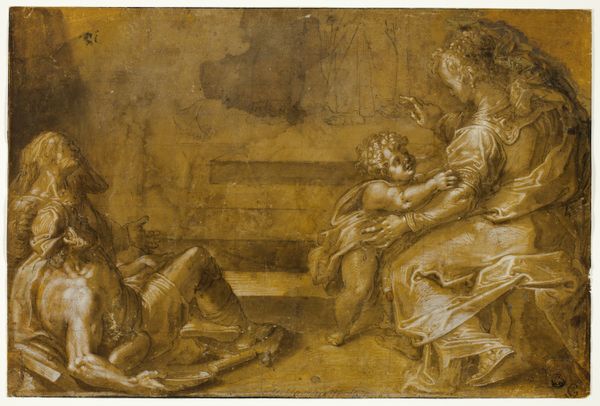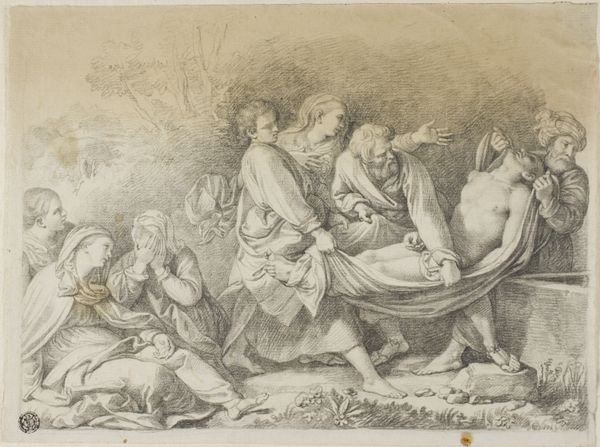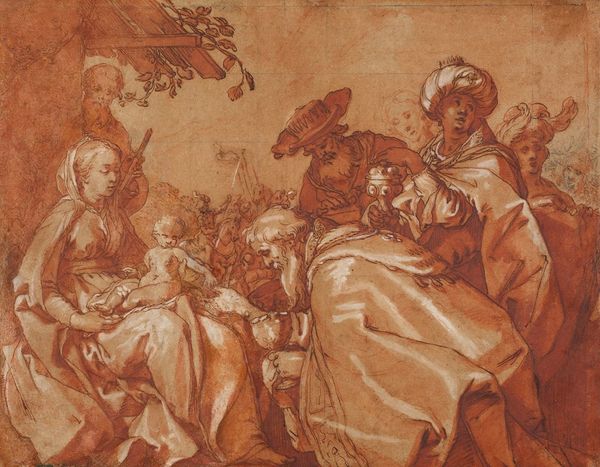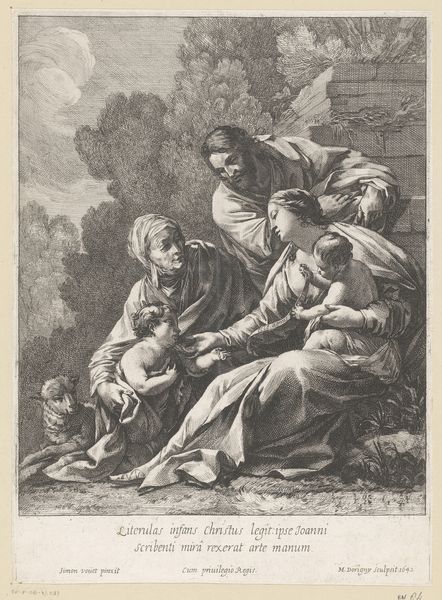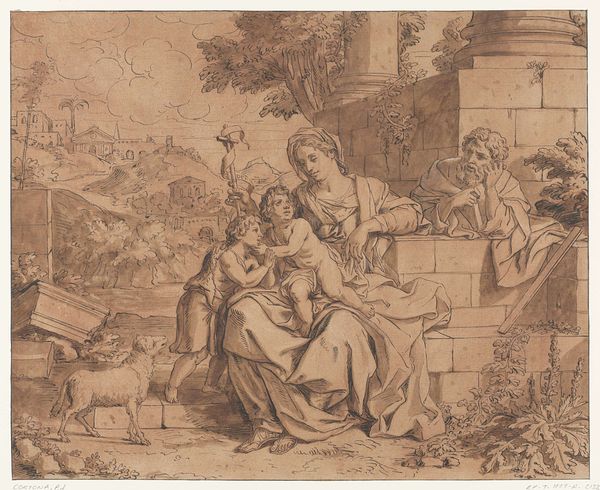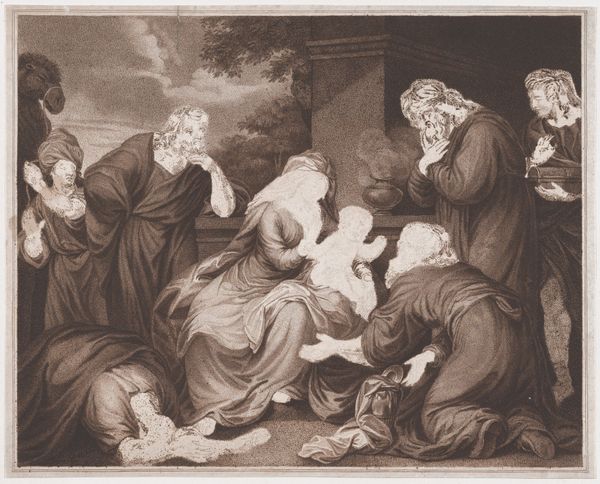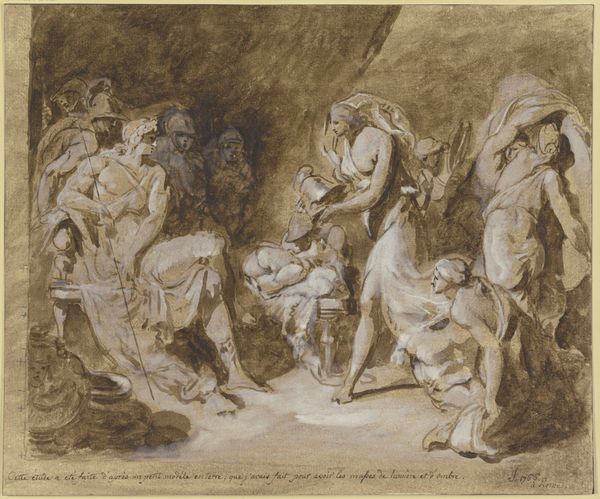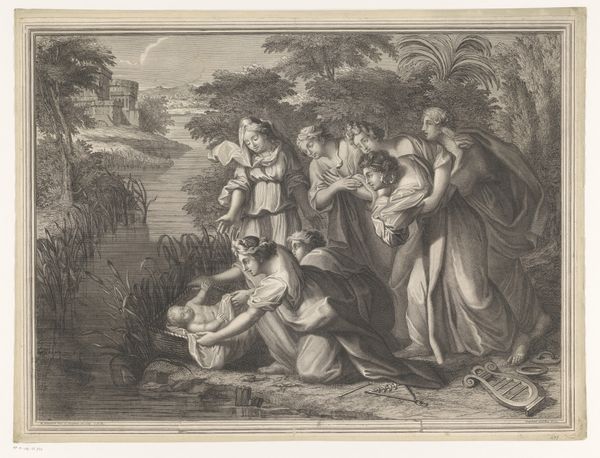
oil-paint
#
portrait
#
allegory
#
baroque
#
dutch-golden-age
#
oil-paint
#
landscape
#
figuration
#
oil painting
#
group-portraits
#
mythology
#
history-painting
Dimensions: 97.8 x 104.6 cm
Copyright: Public domain
Editor: This is Johannes Vermeer's "Diana and her Companions" from 1654, rendered in oil. The grouping of figures gives it a very intimate feel. What strikes you most about its composition and iconography? Curator: The painting evokes a sense of shared space that speaks volumes about societal expectations and womanhood. Vermeer presents Diana, the goddess of the hunt, in a decidedly un-huntlike scenario. This shift immediately intrigues me. What happens when a symbol is deliberately placed out of its expected context? Editor: I suppose it forces us to reconsider the meaning we automatically assign to it. The women aren't actively hunting; they’re tending to each other. Curator: Precisely. Consider the accoutrements present – a ewer, some draped fabric – these hint at domesticity and nurturing, contrasting sharply with the traditional representations of Diana as a powerful, solitary huntress. Editor: So, the symbolism subverts traditional expectations, creating a new narrative? Curator: Exactly! Vermeer may be inviting us to reflect on the multifaceted roles women played in 17th-century Dutch society. Is the abandonment of active hunting a moment of needed pause? A reclaiming of womanhood as rest and recuperation rather than perpetual labor? Editor: It’s fascinating how Vermeer uses established iconography to challenge prevailing ideas. I hadn't considered the symbolism of rest. Curator: Indeed. Vermeer encourages us to look beyond the surface, to delve into the layers of meaning embedded within familiar symbols. Hopefully, this piece may lead you to question the symbolism you see every day. Editor: This makes me appreciate Vermeer’s genius in imbuing this canvas with cultural memory and symbolic disruption. Thanks so much!
Comments
No comments
Be the first to comment and join the conversation on the ultimate creative platform.
